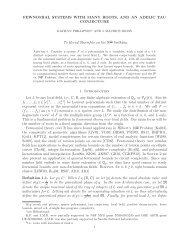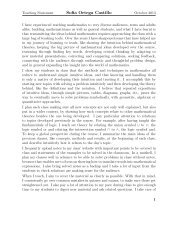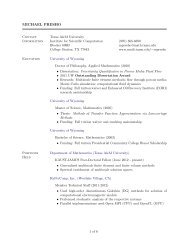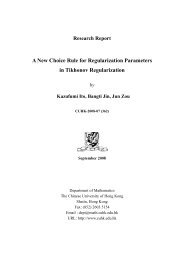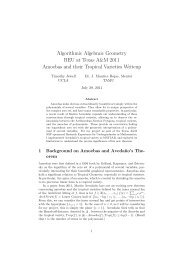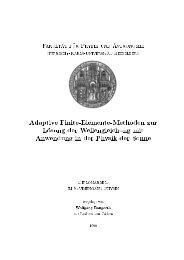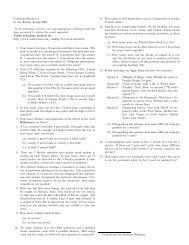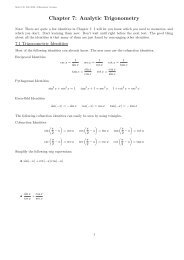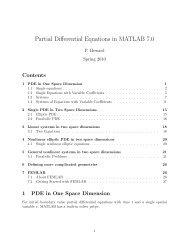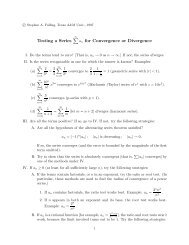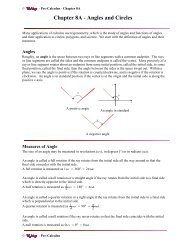Pythagoras and the Pythagoreans - Department of Mathematics
Pythagoras and the Pythagoreans - Department of Mathematics
Pythagoras and the Pythagoreans - Department of Mathematics
Create successful ePaper yourself
Turn your PDF publications into a flip-book with our unique Google optimized e-Paper software.
<strong>Pythagoras</strong> <strong>and</strong> <strong>the</strong> <strong>Pythagoreans</strong> 29<br />
A<br />
C<br />
D<br />
Lune<br />
We wish to determine <strong>the</strong> area <strong>of</strong> <strong>the</strong> lune ABCD, where<strong>the</strong>large<br />
segment ABD is similar to <strong>the</strong> smaller segment (with base on one leg<br />
<strong>of</strong> <strong>the</strong> right isosceles triangle 4ABC). Because segments are to each<br />
o<strong>the</strong>r as <strong>the</strong> squares upon <strong>the</strong>ir bases, we have <strong>the</strong><br />
Proposition:Thearea<strong>of</strong><strong>the</strong>largeluneABCD is <strong>the</strong> area <strong>of</strong> <strong>the</strong> triangle<br />
4ABC.<br />
This proposition was among <strong>the</strong> first that determined <strong>the</strong> area <strong>of</strong> a curvilinear<br />
figure in terms <strong>of</strong> a rectilinear figure. Quadratures were obtained<br />
for o<strong>the</strong>r lunes, as well. There resulted great hope <strong>and</strong> encouragement<br />
that <strong>the</strong> circle could be squared. This was not to be.<br />
7 The Pythagorean Theory <strong>of</strong> Proportion<br />
Besides discovering <strong>the</strong> five regular solids, <strong>Pythagoras</strong> also discovered<br />
<strong>the</strong> <strong>the</strong>ory <strong>of</strong> proportion. <strong>Pythagoras</strong> had probably learned in Babylon<br />
<strong>the</strong> three basic means, <strong>the</strong> arithmetic, <strong>the</strong>geometric, <strong>and</strong><strong>the</strong>subcontrary<br />
(later to be called <strong>the</strong> harmonic).<br />
Beginning with a>b>c<strong>and</strong> denoting b as <strong>the</strong> —mean <strong>of</strong> a<br />
<strong>and</strong> c, <strong>the</strong>y are:<br />
1<br />
a − b<br />
b − c<br />
= a<br />
a<br />
B<br />
arithmetic a + c =2b



